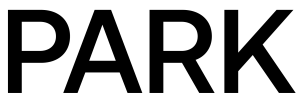
Models are essential design tools in Park vision. This belief is at the core of our Fab, which integrates a fabrication model workshop within the office: a hub of ideas and possibilities focused on design visualization through models. Fab supports and welcomes research projects on innovative materials, parametric design, and façade mock-ups, fostering a continuous dialogue with all the research Units. Continuous learning also finds its place at Fab, with a dedicated workshop program that provides ongoing training for architects and designers, encouraging hands-on exploration and technical development.
I create a wide range of architectural models, varying in scale and purpose. I have a strong appreciation for architectural materials and prefer to maintain their original color and finish. This is why I choose to use a CNC router to create sculptural models by milling solid surfaces like Corian, Fenix, and Valchromat. When possible, I also work with stone, brass, copper, and blocks of acrylic glass. When time and budget constraints are present, I prefer to combine various techniques and materials (MDF, acrylic glass, wood, paper, and plaster, according to the features of the project). I have recently developed a passion for painting, experimenting with different pigments and preferring water-based paints for their rough texture. Painting helps me minimize scraps and waste by reusing them for urban scale models, for example. Currently, I am exploring the possibilities of bio-based materials for model making, particularly in landscape scale models. As I face various scale projects, including architecture, urban master planning, interior, and product design, I aim to find a common style grounded in expressiveness through the use of colors and materiality. I prefer my models to evoke a tactile sensation and to inspire surprise, creating an emotional connection to the project rather than simply miniaturizing it or being overly realistic. I want to represent the architectural mass in a way that reveals its changing qualities under light. Ultimately, I aim for my models to be vibrant.
At Park we use models as a design tool: architects works with paper and foam study models during the design process. For complex models they are supported by the modelmaker in the Fab. Recently, Fab launched a workshop program for junior architects and product design interns. This program teaches the fundamental techniques of digital fabrication for model making, with a focus on Rhinoceros software. Participants will also work on designing a scale model based on a Park simple project. As a professional modelmaker, I am responsible for competition and presentation models. I also oversee the maintenance of the Fab and our archive. When our factory can't supply the entire production of an important model, I rely on a network of other suppliers, professionals, and colleagues to assist me in the making.
Connect with architects, modelmakers, and students worldwide. Showcase your work, discover networking opportunities, and be part of the future of architectural innovation that appreciates and preserves the use of physical modelmaking in personal and professional architectural design process.
Join architects and modelmakers around the world.
You'll be taken to the next stage of the sign up process where you can provide more details about your practice.
